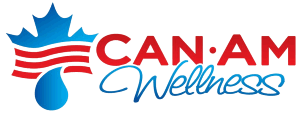December News from IAQ
For The IAQ Industry
Dec, 2007 Vol. 1

Invisible Hitchhikers
The biggest threat to your health and safety may not be other drivers on the road but the invisible toxins riding shotgun in your car. At best, fumes coming from the materials surrounding you in your car might merely exacerbate preexisting asthma or allergies. At worst, they could be carcinogens.
In a report published for the Ecology Center, they identified two categories of chemicals lurking in car materials: Phthalates and brominated flame retardants, such as deca. Phthalates make plastics softer and more elastic. They have also been shown to lead to liver and kidney damage in rodents. As for the flame retardants, they act like rat poison, too, causing brain damage and thyroid problems. In another 2007 study scientists analyzed the air in 20 new vehicles and found elevated levels of VOCs in all interiors. In fact, one contained 200 times more aromatic hydrocarbons than humans should safely inhale.
A possible solution is to put in a car filter such as the BelKraft XR-100 car filter.
Don’t Forget Hydrogen Sulfide
Hydrogen sulfide is a flammable, colorless gas with a characteristic odor of rotten eggs. It is commonly known as hydrosulfuric acid, sewer gas, and stink damp. It can often be a contributor to SBS. It is a highly toxic and flammable gas. Being heavier than air, it tends to accumulate at the bottom of poorly ventilated spaces. Although very pungent at first, it quickly deadens the sense of smell, so potential victims may be unaware of its presence.
Since hydrogen sulfide occurs naturally in the environment and the gut, enzymes exist in the body capable of detoxifying it by oxidation to (harmless) sulfate. Hence low levels of sulfide may be tolerated indefinitely. However, at some threshold level, the oxidative enzymes will be overwhelmed. This threshold level is believed to average around 300-350 ppm. Many personal safety gas detectors are set to alarm at 10 PPM and to go into high alarm at 15 PPM (Utility, sewage & petrochemical workers). Exposure to lower concentrations can result in eye irritation, a sore throat and cough, nausea, shortness of breath, and fluid in the lungs. 0.0047 ppm is the recognition threshold, the concentration at which 50% of humans can detect the characteristic odor of hydrogen sulfide, normally described as resembling “a rotten egg”. 0-20 ppm is the borderline concentration for eye irritation.
Exposure to hydrogen sulfide gas can occur in the home and in the workplace. In the home, exposure may occur because of faulty plumbing. Sewer drains that have dry traps can allow hydrogen sulfide gas to enter the home. You may also be exposed to hydrogen sulfide from breathing contaminated air or drinking contaminated water. Individuals living near a wastewater treatment plant, a gas and oil drilling operation, a farm with manure storage or livestock confinement facilities, or a landfill may be exposed to higher levels of hydrogen sulfide. Exposure can occur at work if you work in the rayon textiles, petroleum and natural gas drilling and refining, food processing, paper mills, tanneries, or wastewater treatment industries. Workers on farms with manure storage pits or landfills can be exposed to higher levels of hydrogen sulfide.
